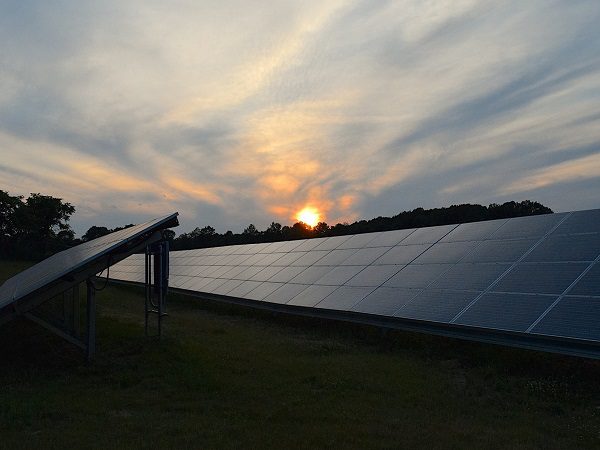Solar Energy in Urban Spaces: Innovative Approaches to Solar Integration

In recent years, the increasing demand for sustainable energy solutions has led urban planners and architects to explore innovative approaches to incorporate solar energy into urban spaces. As cities grapple with the challenges of rapid urbanization and environmental concerns, harnessing solar power within urban landscapes has emerged as a promising solution. This article delves into the various innovative approaches to solar integration in urban spaces, highlighting the importance of sustainable energy in mitigating climate change and fostering greener, more resilient cities.
The Growing Need for Solar Integration
Urbanization has led to a surge in energy consumption, making it imperative for cities to seek renewable alternatives. Solar energy, with its abundance and environmental benefits, stands out as a viable solution. Integrating solar technologies in urban spaces not only addresses the energy needs but also reduces the carbon footprint, contributing to a cleaner and more sustainable future.
Rooftop Solar Installations
One of the most effective approaches to solar integration in urban areas is the widespread adoption of rooftop solar installations. As buildings cover substantial surface areas, converting rooftops into solar power generators becomes a practical and space-efficient solution. Many cities around the world are incentivizing the installation of solar panels on residential and commercial buildings, encouraging individuals and businesses to contribute to the renewable energy grid.
Rooftop solar installations offer a dual advantage – they generate clean energy while utilizing otherwise unused space. The aesthetic integration of solar panels into building designs is becoming increasingly common, showcasing a harmonious blend of functionality and architectural aesthetics.
Solar-Embedded Infrastructure
Innovative urban planning involves embedding solar technologies into various infrastructure elements. For instance, solar-powered streetlights, bus stops, and benches can serve dual purposes by providing essential services and generating energy simultaneously. These solar-embedded structures not only contribute to energy conservation but also enhance the overall functionality and efficiency of urban spaces.
By integrating solar panels into the design of public spaces, cities can create a sustainable infrastructure that caters to the needs of residents while reducing dependence on traditional power sources. This approach aligns with the growing trend of smart cities, where technology is harnessed to improve urban living conditions.
Building-Integrated Photovoltaics (BIPV)
Building-integrated photovoltaics (BIPV) present an exciting avenue for seamlessly incorporating solar energy into urban architecture. BIPV involves integrating solar panels directly into the building materials, such as windows, facades, and roofing materials. This approach not only generates electricity but also enhances the thermal efficiency of buildings.
The aesthetic appeal of BIPV makes it an attractive option for architects and developers looking to create visually appealing and sustainable structures. As technology advances, BIPV solutions are becoming more cost-effective, further incentivizing their adoption in urban development projects.
Solar Canopies and Shades
Urban spaces often feature open areas such as parking lots, plazas, and recreational areas that receive ample sunlight. Installing solar canopies and shades in these spaces offers a dual benefit of providing shade to residents while generating clean energy. These structures are particularly effective in areas with limited rooftop space or where traditional solar installations may not be feasible.
Solar canopies can be designed to blend seamlessly with the surrounding environment, creating aesthetically pleasing additions to urban landscapes. Additionally, the shade they provide contributes to the overall comfort of outdoor spaces, encouraging community engagement and promoting a more sustainable urban lifestyle.
Transitions and Connectivity
Transitioning to solar energy in urban spaces requires a comprehensive and collaborative effort. Cities must prioritize sustainable practices and implement policies that support the integration of solar technologies. As we explore innovative approaches to solar integration, the importance of connectivity between various initiatives becomes evident. Seamless transitions between different solar solutions contribute to the overall effectiveness of urban sustainability efforts.
Community Solar Projects
Community solar projects are gaining momentum as an inclusive approach to solar integration in urban areas. These initiatives involve the development of solar installations that can be collectively owned or shared by a community. This model allows residents who may not have suitable rooftops for solar panels to benefit from clean energy without the need for individual installations.
By fostering a sense of community ownership, these projects promote solar energy as a shared resource, encouraging collaboration and building stronger social ties. Additionally, community solar projects contribute to a decentralized energy grid, enhancing the resilience of urban power systems.
Solar-Powered Transportation
Integrating solar power into transportation infrastructure is another innovative avenue for urban sustainability. Solar-powered electric vehicle (EV) charging stations and solar-enhanced public transportation systems contribute to reducing the carbon footprint associated with urban mobility. As electric vehicles become more prevalent, leveraging solar energy for their charging infrastructure aligns with the broader goal of transitioning to cleaner transportation options.
The use of solar energy in urban transportation not only reduces greenhouse gas emissions but also enhances the overall efficiency and reliability of transit systems. By creating an interconnected network of solar-powered transportation solutions, cities can make significant strides towards achieving a greener and more sustainable urban environment.
Conclusion
The integration of solar energy into urban spaces is a multifaceted endeavor that requires a holistic approach. From rooftop installations to community solar projects and solar-embedded infrastructure, cities have a plethora of innovative options to harness the power of the sun. As urbanization continues to shape the landscape of our cities, embracing sustainable practices and prioritizing solar integration will be crucial for building resilient, eco-friendly urban spaces. By fostering collaboration between policymakers, urban planners, architects, and the community, we can create a future where solar energy plays a central role in powering our cities towards a sustainable and brighter tomorrow.






